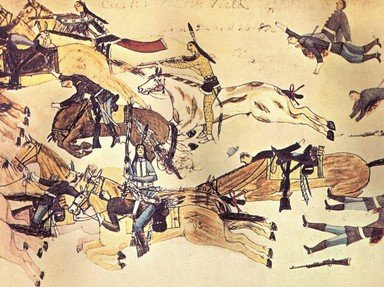A boy named Čháŋ Óhaŋ, which means
, was born sometime in the early 1840s in the modern state of
. His mother nicknamed him
.
In 1854, after witnessing the death of Chief Conquering Bear at the hands of United States soldiers, Čháŋ Óhaŋ went out on a
. The rite of passage led him to adopt a yellow
for face paint and white
on his body during battle. After Čháŋ Óhaŋhe described the movements of the horse in his vision, his father, [Tȟasúŋke Witkó], gave Čháŋ Óhaŋhe his name, which means
and took a new name for himself.
Crazy Horse took part in many battles, such as the
, as he grew into a man. Because of his skill in battle and generosity to members of his tribe, he was named a
in 1865.
While it is known that Crazy Horse was present at the
in 1876, very little is known about his actions there. He did lead his people, the
, and their allies, the
, against General George
7th Cavalry. Some of his people said that he was the bravest and greatest fighter at the battle, from which he apparently emerged unharmed.
A year later, though, his people were weak and hungry. He attended the
, but did not participate. With a small group of men, he then traveled to Fort Robinson,
, and surrendered. Four months later he was stabbed with a
by a guardsman who thought he was trying to escape. His father was given his remains, and, to this day, his burial site remains unknown.
